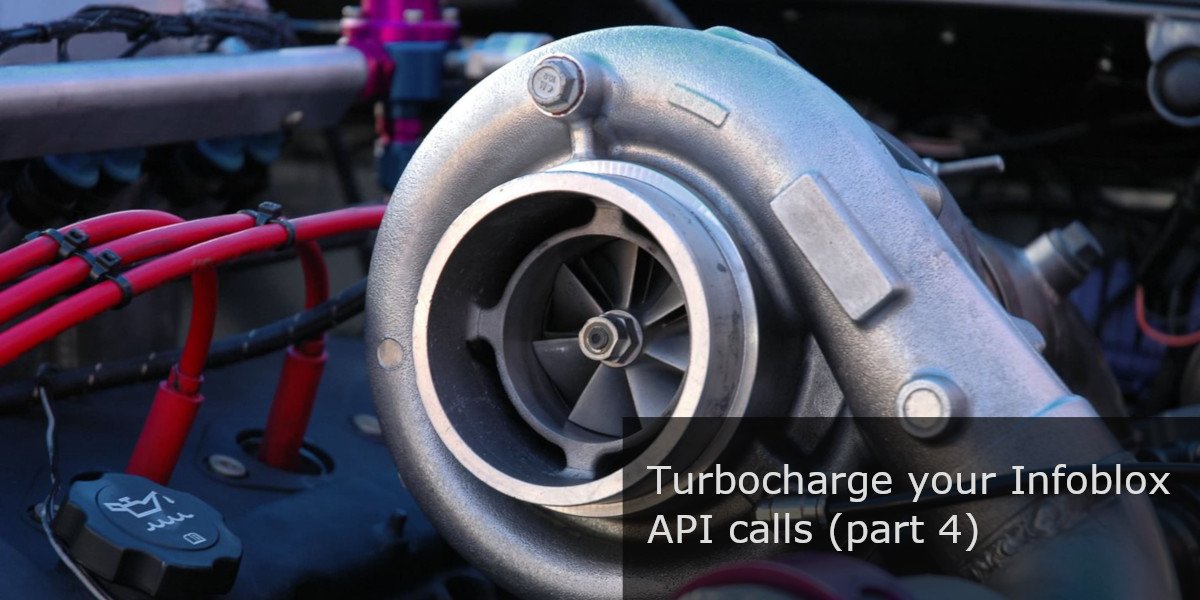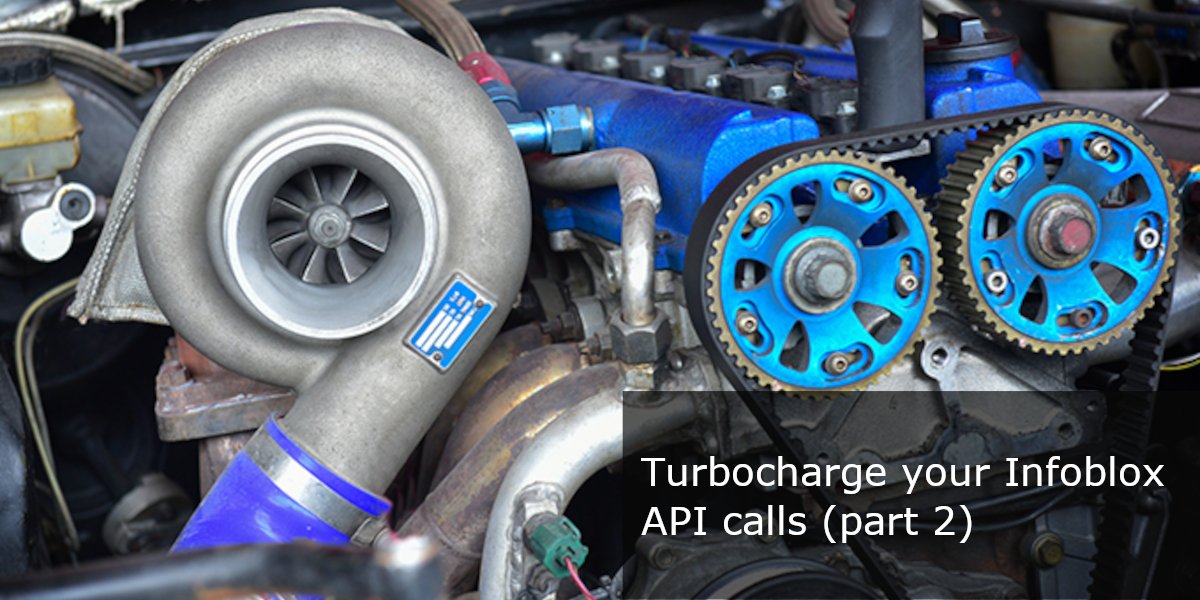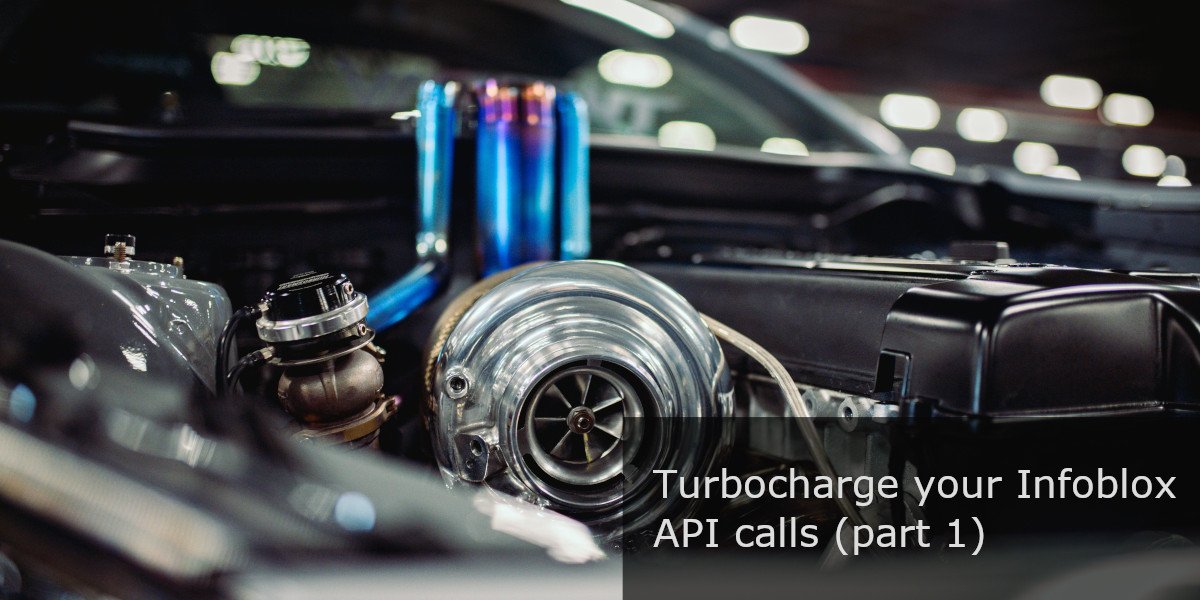
In part 4 of Turbocharge your Infoblox RESTful API calls series, we discuss what asynchronous programming is, and how it can be implemented to dramatically improve the speed of automation scripts.
OVERVIEW
In this fourth and final article of the Turbocharge your Infoblox RESTful API calls series, we explain what async programming is, its pros and cons, as well as demonstrate how how it can be leveraged to vastly improve the performance of scripts which make use of the Infoblox WAPI. In this article we will again take our original WAPI script which inserts 1,024 IPv4 network objects...

In part 3 of Turbocharge your Infoblox RESTful API calls series, we discuss how to batch WAPI requests using the request body to speed up our automation scripts.
OVERVIEW
In this third article of the Turbocharge your Infoblox RESTful API calls series, we discuss synchronous programming and its drawbacks. In addition, we show how to leverage the Infoblox WAPI request object to effectively batch a large number of "requests" into a single WAPI call to improve performance. First, we should discuss what synchronous programming is, why it's good, and what are its weaknesses.
The code u...

In part 2 of Turbocharge your Infoblox RESTful API calls series, we discuss concurrency, its pros and cons, how it can be implemented to speed up automation scripts.
OVERVIEW
In this second article of the Turbocharge your Infoblox RESTful API calls series, we'll take our synchronous Infoblox WAPI automation script and demonstrate how we can improve it by using concurrency to make it run faster. In this article we discuss what concurrency is, the pros and cons for using it in development, and how to implement it in our automation scripts. Recall that at a high level, scripts can be...

In this multi-part series we provide four ways to vastly improve the performance and efficiency of your calls to the Infoblox REST API.
OVERVIEW
I've spent the last several weeks exploring ways to improve the performance of scripts that leverage the Infoblox NIOS WAPI to make customer DDI automation execute faster. In this multi-part series, we'll detail four ways to turbocharge your scripts when making calls to the Infoblox WAPI. Our goals are to provide the following:
- Increase performance - i.e., reduce the time to execute scripts
- Achieve greater efficiency
- Improve business...

A common task for decommissioning or moving a name server is figuring out which clients are querying our particular name server. In this article, I discuss how you can parse syslog messages and build a DNS Top Talkers list.
OVERVIEW
I recently worked with a customer on a project to help them decommission an Infoblox DNS appliance from their Grid. They needed the device to be removed from "play" immediately and there was very little time to accomplish the task. Our first task was to determine the following:
- What IP addresses were querying the DNS?
- What was the volume of DNS quer...

Learn to programatically compare lists of networks from spreadsheets, text files, and other databases with the Infoblox Grid.
I sort of struggled what to call this blog entry, but at the time, this is what I was trying to do. I was tasked with taking a list of network IP Addresses from router/switch config files and compare them to a different list of networks currently defined in an Infoblox Grid. All I needed was something that worked and that was timely since I didn't have lavish amounts of time.
The logical flow of my script would go something like this:
- fetch all Infoblox networ...
